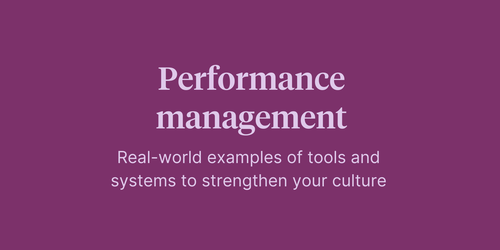
How to set goals for remote and hybrid teams

Written by

The employee experience platform
Employee goals are the backbone of any effective performance management process, helping you bring clarity to your direct reports on what they need to do and how their work will be evaluated. As more employees work remotely or away from their teams, one thing that doesn’t change is the power goals that have to increase performance and motivation. Let’s look at which goals to emphasize so goal setting can be even more effective for a flexible and remote team.
Why are employee goals important while managing remotely?
There are three main reasons goal-setting is important for remote and hybrid teams.
Motivation
Goals can motivate your direct reports to put additional effort into their tasks and be more accountable than they would without goals.
What this means while remote:
Recent research has found employees are less motivated when working from home, especially if they have no choice in the matter. Goals can help bolster that motivation, especially if you use learning goals (e.g., “Discover a way to reach over 500 people in the next quarter”) instead of or in addition to performance goals (e.g., “Facilitate three webinars that reach over 500 people”).
These learning goals give employees the autonomy to decide how they’ll achieve those goals and tap into their need to play.
Clarification
Goals create a shared understanding of what needs to get done, whether at the individual level or applied to the whole team.
What this means while remote:
When managing a remote team, it’s even more important to be clear about what needs to get done since employees won’t receive the additional direction they would typically receive in person. Additionally, it’s difficult for employees to contextualize their goals without observing the work of others.
Evaluation
Goals make it easier for you to evaluate your direct report’s performance based on the goals that were previously committed to.
What this means while remote:
You might already know there are plenty of biases that can creep into the performance review process, and there are new ones when it comes to managing a distributed team. One is proximity bias, which is when managers place a higher value on the work they physically see someone doing while discounting work that is done out of sight. Goals can help mitigate this by giving you a clear yardstick to compare performance, particularly in hybrid teams where some direct reports may be co-located while others are not.
How can you make goals most effective?
You may already know goals are important, but you might be unsure how to implement them in your team. Here are some guidelines to make sure goals are effective in remote environments, too:
Participation
Give your direct report the opportunity to participate in the goal-setting process. Employees who are involved in the goal-setting process are more committed to their goals and set higher goals than those who are simply assigned goals.
What to do when you have remote/distributed direct reports:
While managing remotely, you might not be as aware of the context in which your direct reports are operating. Giving them the opportunity to participate in the goal-setting process, or at least to provide feedback on their working conditions, will give you more information when making decisions around reasonable expectations. This will save you time later on instead of having to guess at what goals to adapt to.
Specificity
In order for goals to be motivating, clarifying, and a useful tool for evaluating, they need to be specific. One way to do this is by using the SMART acronym, which you can learn more about in our article, "A framework for employee performance goals."
What to do when you have remote/distributed direct reports:
When crafting your team’s goals, it’s important to create interdependent shared goals. This interdependence helps teams feel connected even when they’re apart. But when crafting individual goals, especially if your team is distributed across timezones, it’s important to make sure their work is independent so that they don’t feel blocked by other team members or need to coordinate outside of their normal working hours.
Documentation
It may sound obvious but those who write down their goals are 20-40% more likely to achieve them.
What to do when you have remote/distributed direct reports:
In a remote setting, using an online platform where all individuals can access goals will help keep them front of mind. Having a place to access goals will ensure individuals do not forget the goals they are working on and will drive accountability. We recommend making goals visible to your entire team because seeing their coworkers committing to and completing their goals will also help foster trust.
Check-ins
Goals are only useful if their progress is being evaluated. Be sure to bring them to the forefront in your team meetings and provide your direct reports feedback along the way.
What to do when you have remote/distributed direct reports:
It can be more difficult in a remote setting for employees to raise the alarm bell that things aren’t going to plan. Regularly checking in on goals gives your direct reports the opportunity to raise concerns. Be willing to adapt the goals if you need to course-correct them. Also, pay attention to how meetings are conducted if your direct reports work across time zones.
Goal-setting in the new world of work
When managing remotely, setting employee goals can help you as a manager motivate your team, clarify expectations, keep them on track, and evaluate their performance when the time comes. If you’d like help creating and aligning team goals, download our workbook.


